Part 2 - The Coming Attack on China
In a desperate effort to maintain global hegemony and buoy the US economy through this worsening downturn, the US believes it must damage China’s relations with the world and destroy some of its productive capacity in the process.
But how? 🧵
In a desperate effort to maintain global hegemony and buoy the US economy through this worsening downturn, the US believes it must damage China’s relations with the world and destroy some of its productive capacity in the process.
But how? 🧵
The failure of Trump’s 2017 China tariffs demonstrated that unilateral actions are ineffective. The US must instead create a pretext for multilateral bullying.
To do this, the US will do what it has done before every other campaign of overt aggression: manufacture a casus belli.
To do this, the US will do what it has done before every other campaign of overt aggression: manufacture a casus belli.
Since 1947, the CPC has maintained that China will walk the path of peaceful reunification with Taiwan, no matter how long it takes. Forced reunification should only be pursued if China’s sovereignty is under imminent threat. What would constitute such a threat? 

In short: a clear violation of the One China principle, such as Taiwan moving toward seceding. As such, if Taiwan could be goaded into holding an independence referendum, China would almost certainly move rapidly toward forced reunification. 

Currently, there are no indications either of Taiwan’s two governing parties have any intention of holding such a referendum, nor would they have meaningful public support if they did. So then how does the US intend to prod Taiwan in this direction? 
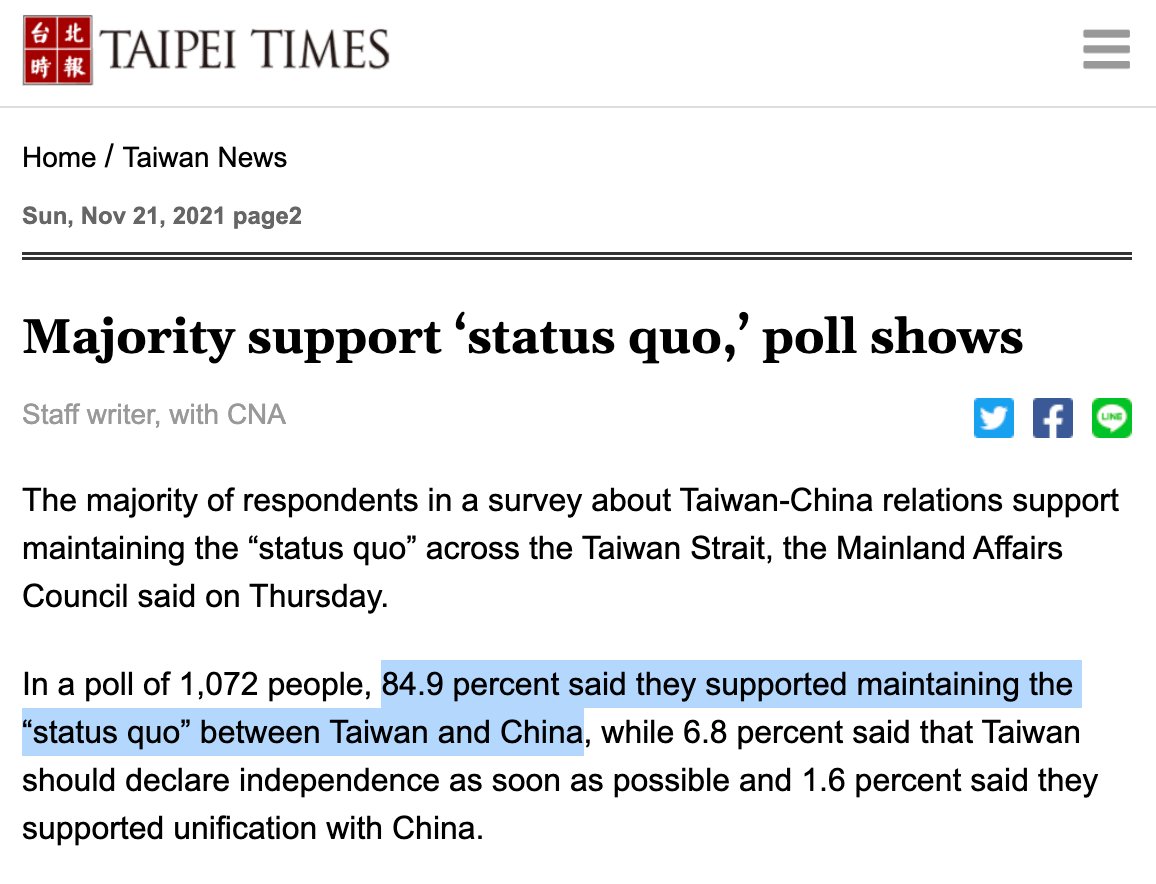
The current US strategy appears to be salami slicing toward China’s red line by funnelling offensive weapons onto the island until China forces reunification. It's also not hard to imagine the US further escalating by manufacturing a military incident in the Taiwan Strait. 

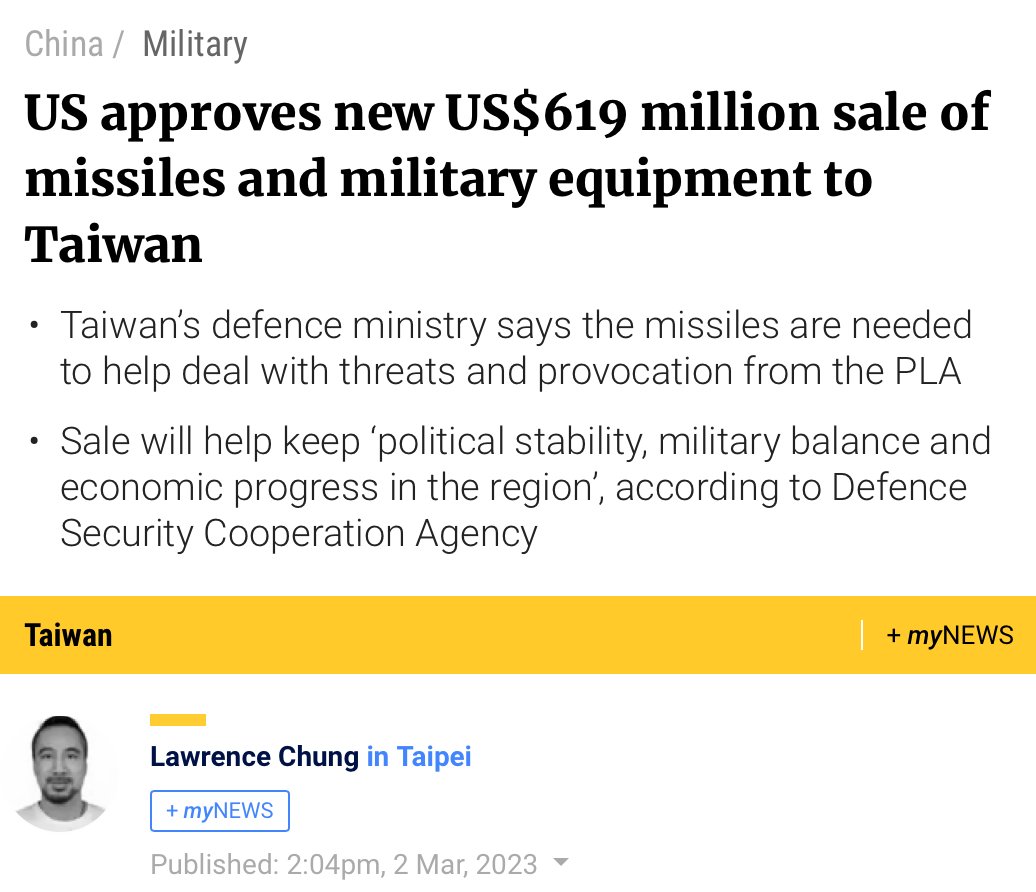
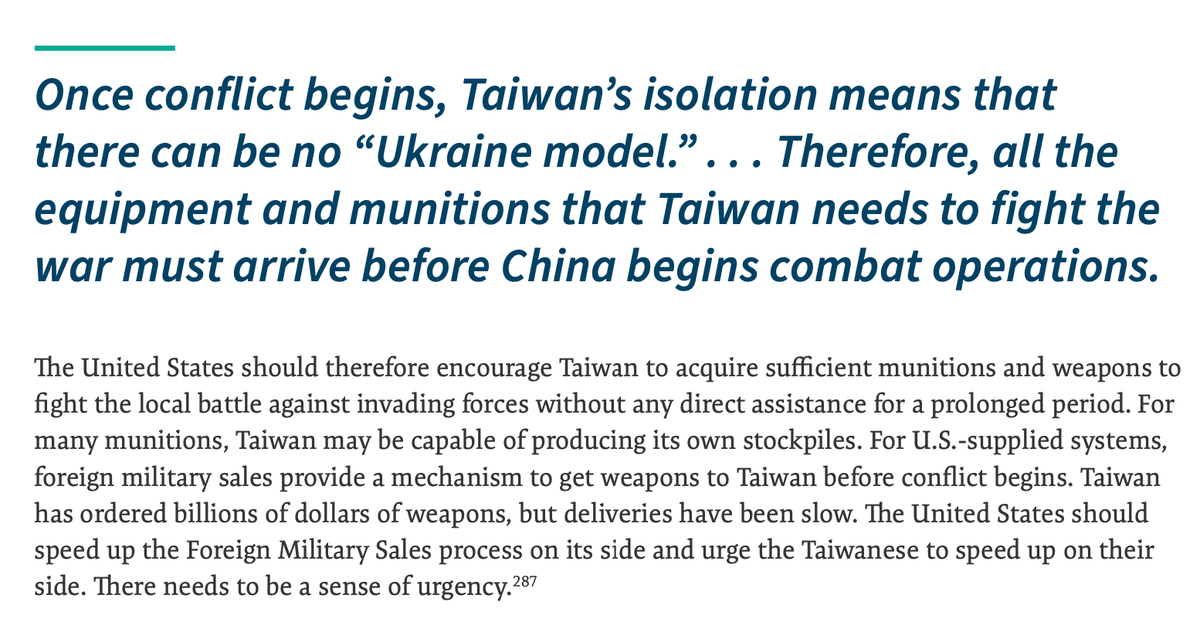
But neither strategy is likely to galvanize Taiwan’s population to support war.
The fastest way to foment broad Taiwanese support for an independence referendum might be to launch a wide-scale cyberattack on the island’s power grid that could feasibly be blamed on the mainland.
The fastest way to foment broad Taiwanese support for an independence referendum might be to launch a wide-scale cyberattack on the island’s power grid that could feasibly be blamed on the mainland.
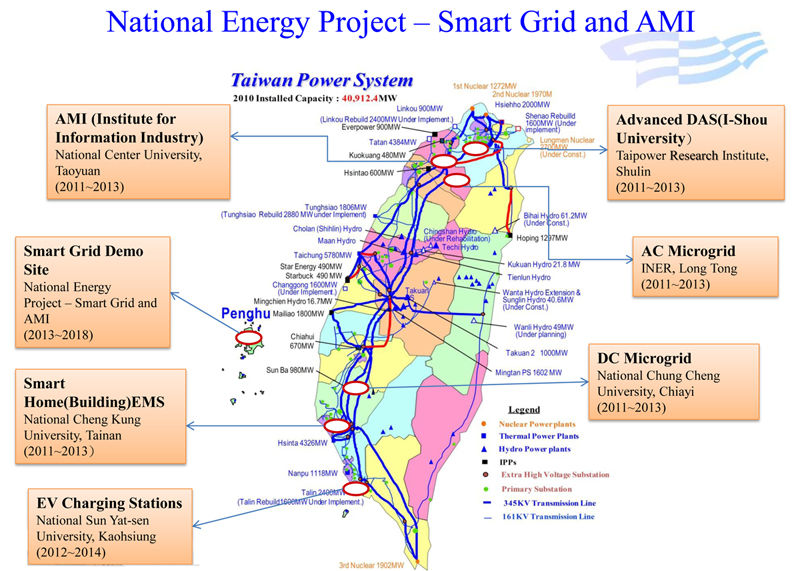
With the land area of Maryland but nearly the population of Texas, Taiwan’s isolation and population density make it a sitting duck. Since the entire island shares a single centrally controlled power grid, an incident at any one plant could quickly cascade into a full shutdown. 
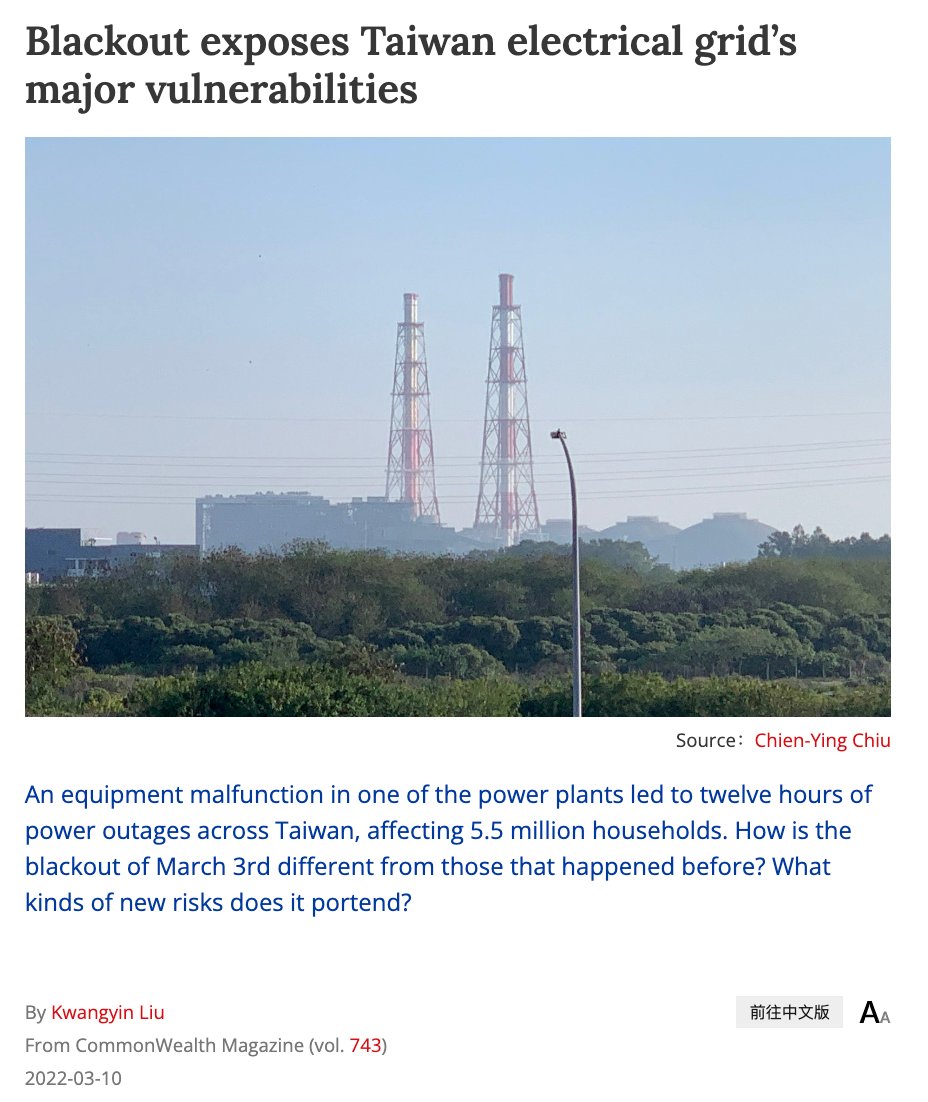
The island's grid is run by the Taiwan Power Company (“Taipower”), which operates the generation, transmission and distribution of electricity. Back in 2012, Taipower began a program of grid modernization that had a large focus on implementing ‘smart grid’ tech. 



Smart grids have distinct advantages in being able to dynamically respond to changes in load. But the increased interconnection and automation makes them, in theory, much more susceptible to malicious cyberattack, particularly those with state-sponsored levels of sophistication. 

These potential vulnerabilities are compounded when considering Taiwanese demographics, which skew heavily toward the elderly. If a grid attack were to occur during Taiwan’s hot summer months, an extended lack of air-conditioning could prove especially deadly. 


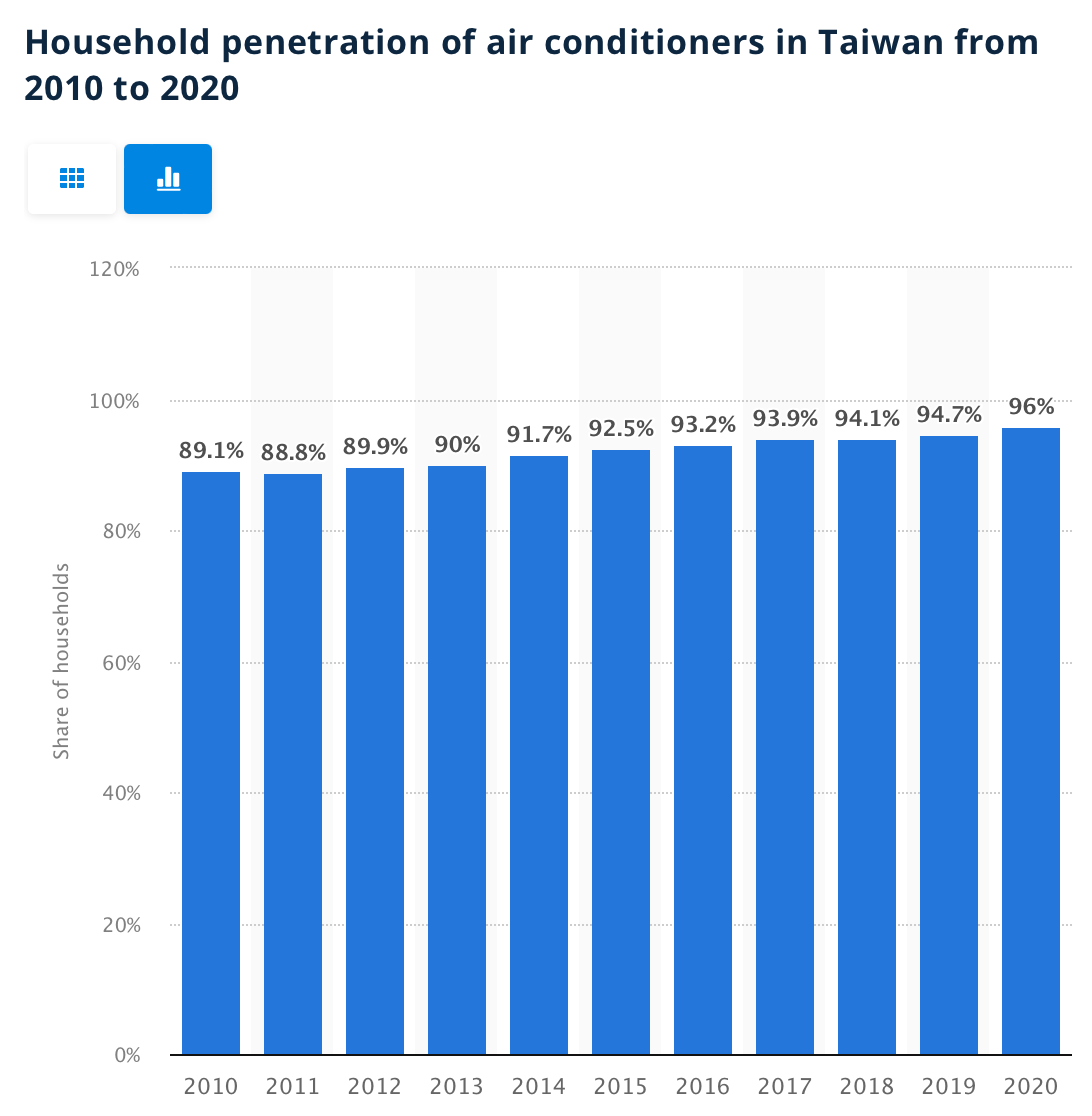

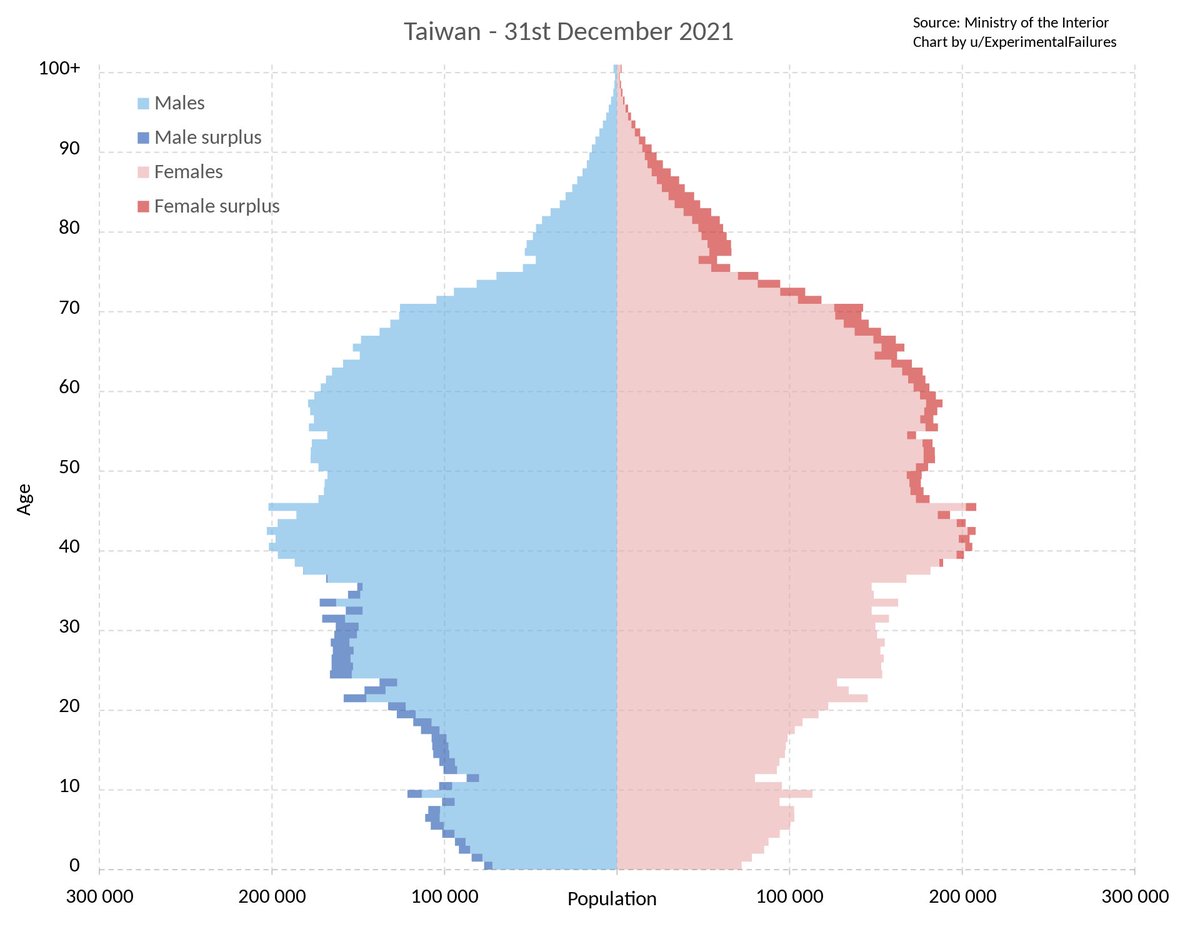
Studies of US cities have shown that heat waves combined with blackout events would present an acute public health emergency. And with Taiwanese heat waves approaching 40°C/104°F becoming increasingly common, cities like Taipei would be especially vulnerable. 

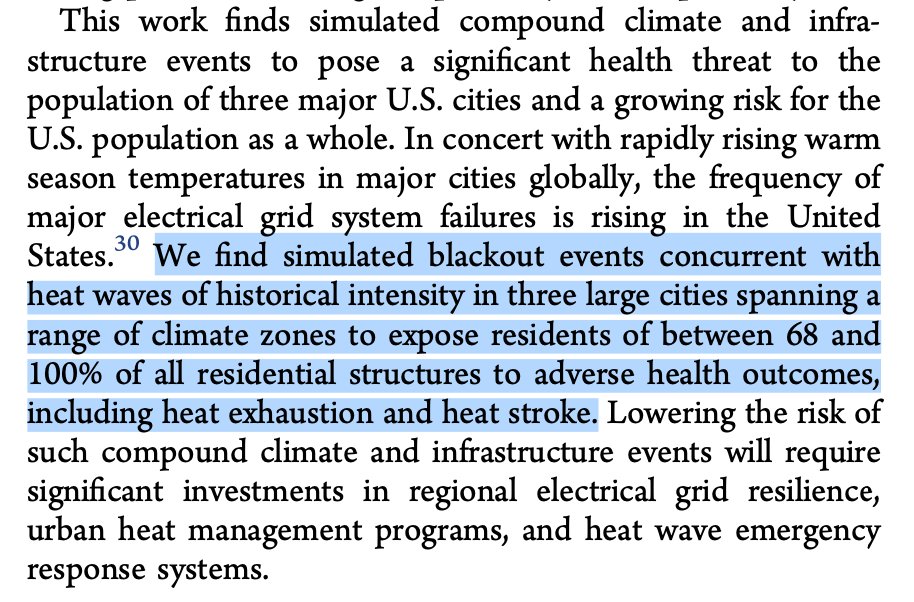
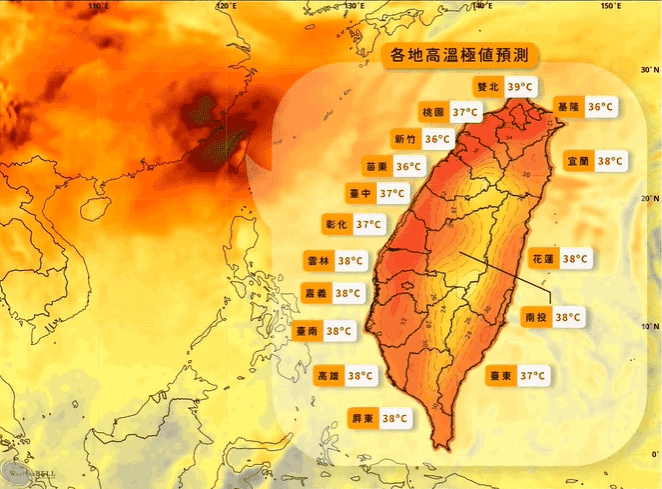
Somewhat forebodingly, the number of cyberattacks on Taiwan’s grid have increased significantly over the past few years. And while these attacks have yet to result in serious outages, they could indicate the grid is being probed for weaknesses as a prelude to the real thing. 

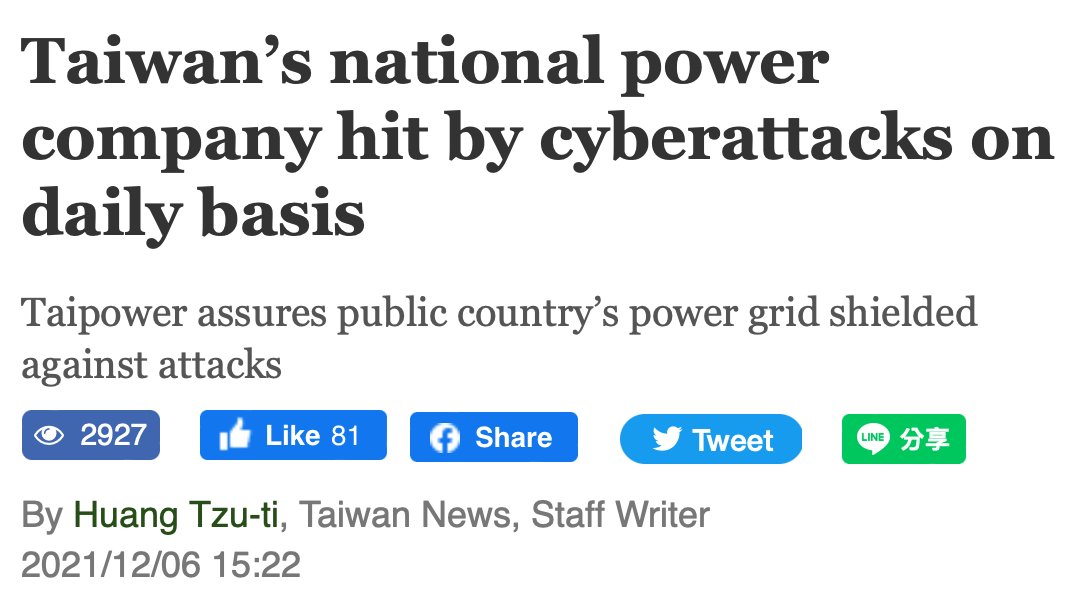

Such an attack would lend itself extremely well to generating a bounty of atrocity propaganda, since western audiences have already been heavily primed to reflexively assume any cyberattack on Taiwan must have originated from the mainland. 



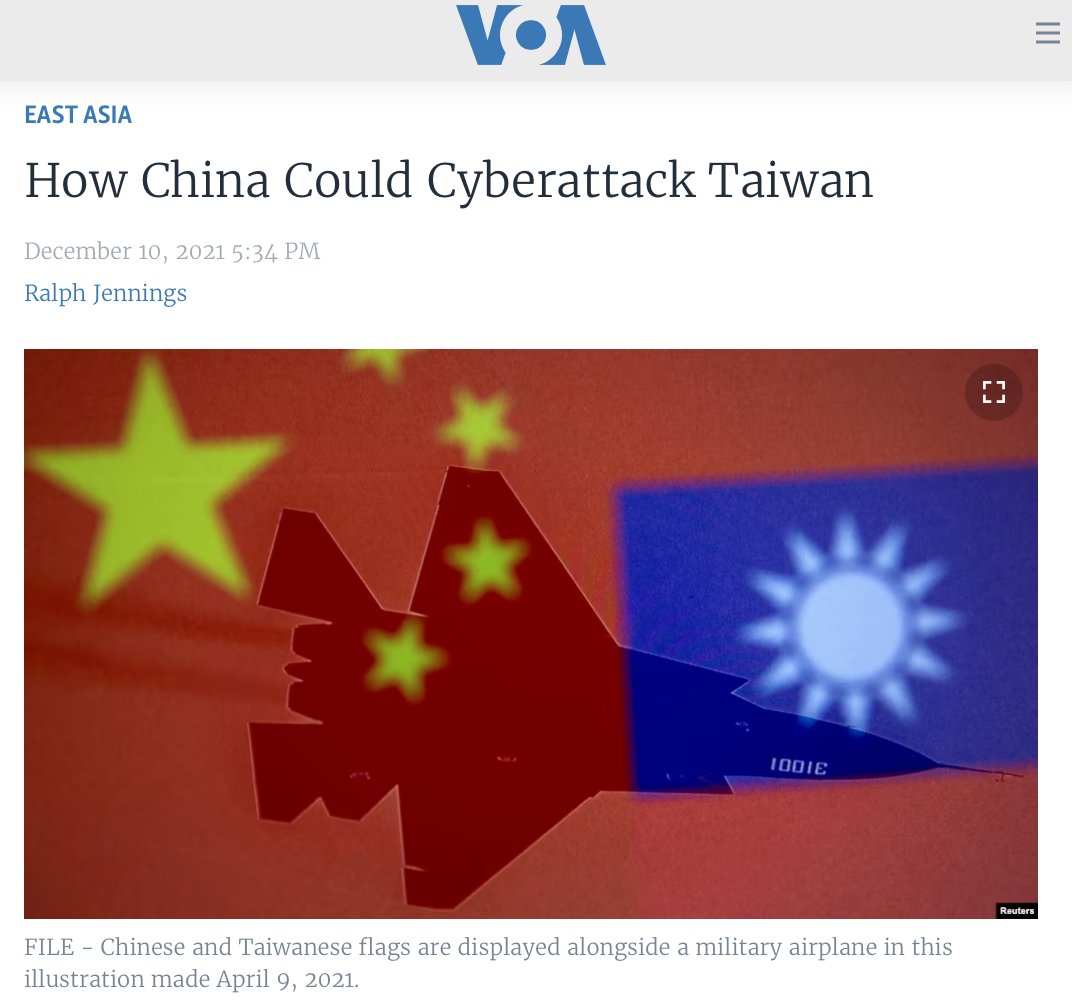

But while the US has been quick to pin recent high-profile cyberattacks on Iran, China, and Russia, the US itself has an extensive history of using cyberattacks to target civilian infrastructure in other countries. 

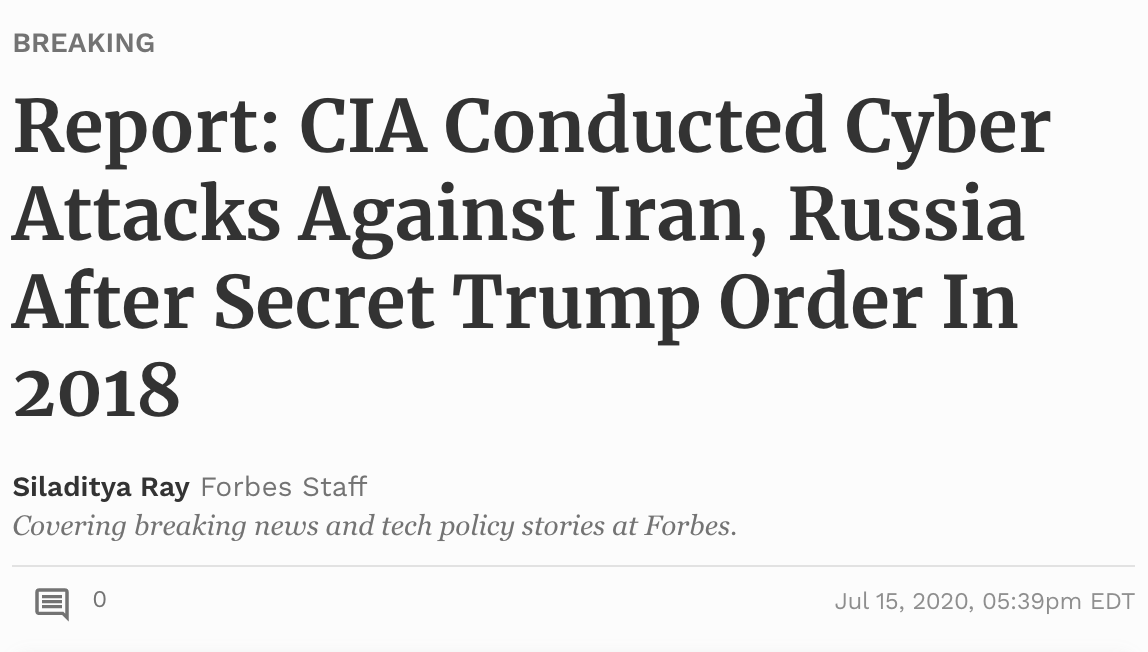
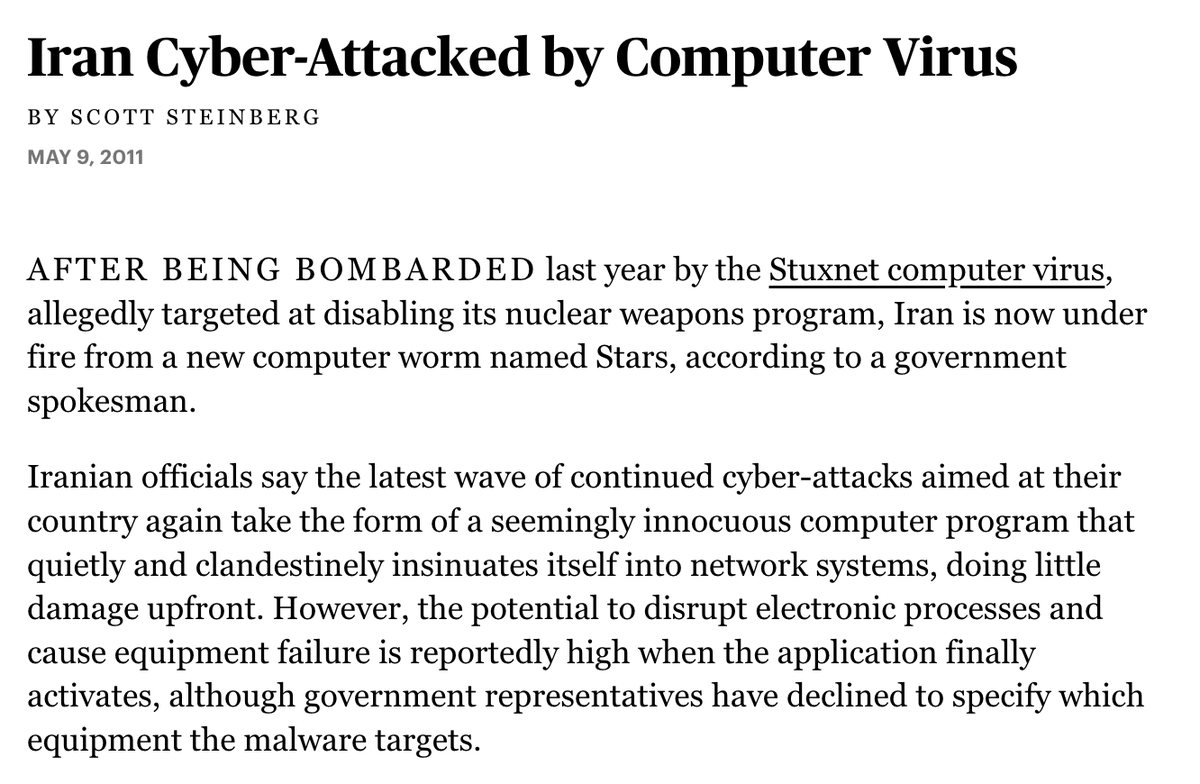
Not only that, in 2017 Wikileaks revealed the CIA has developed a suite of hacking tools called Vault 7. One tool in particular known as ‘Marble’ is specifically designed to mislead forensic investigators into incorrectly attributing attack origins. 
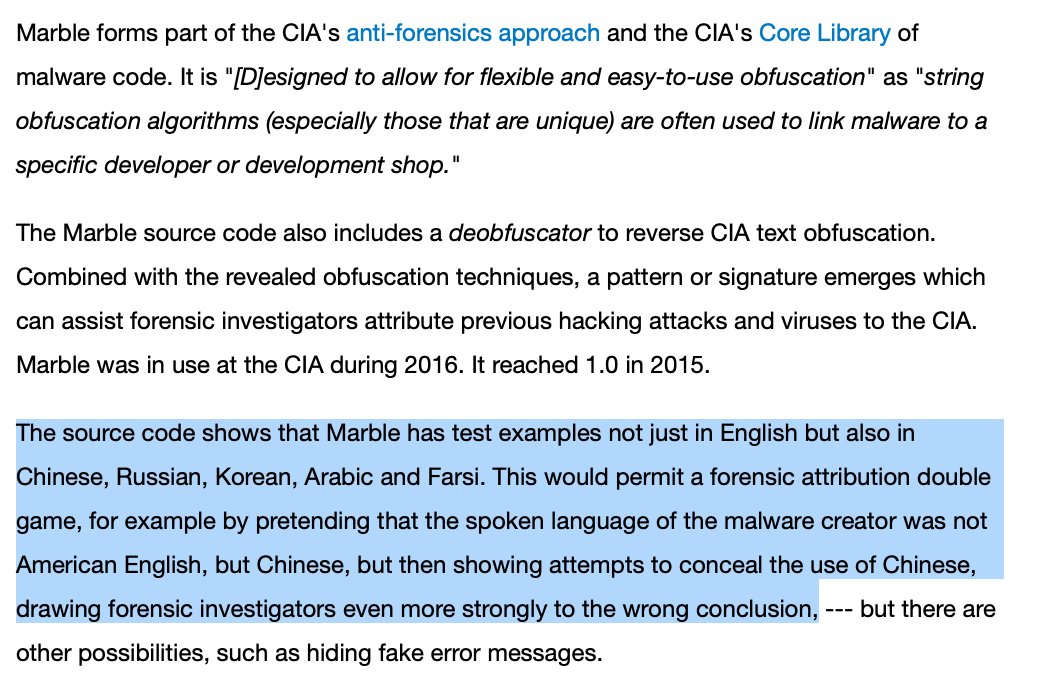
By contrast, if China was intent on initiating forced reunification with Taiwan, there would simply be no reason to forewarn the island with an ineffectual cyberattack. The PLA could simply blockade the island, whose grid is almost entirely reliant on imported fossil fuels. 
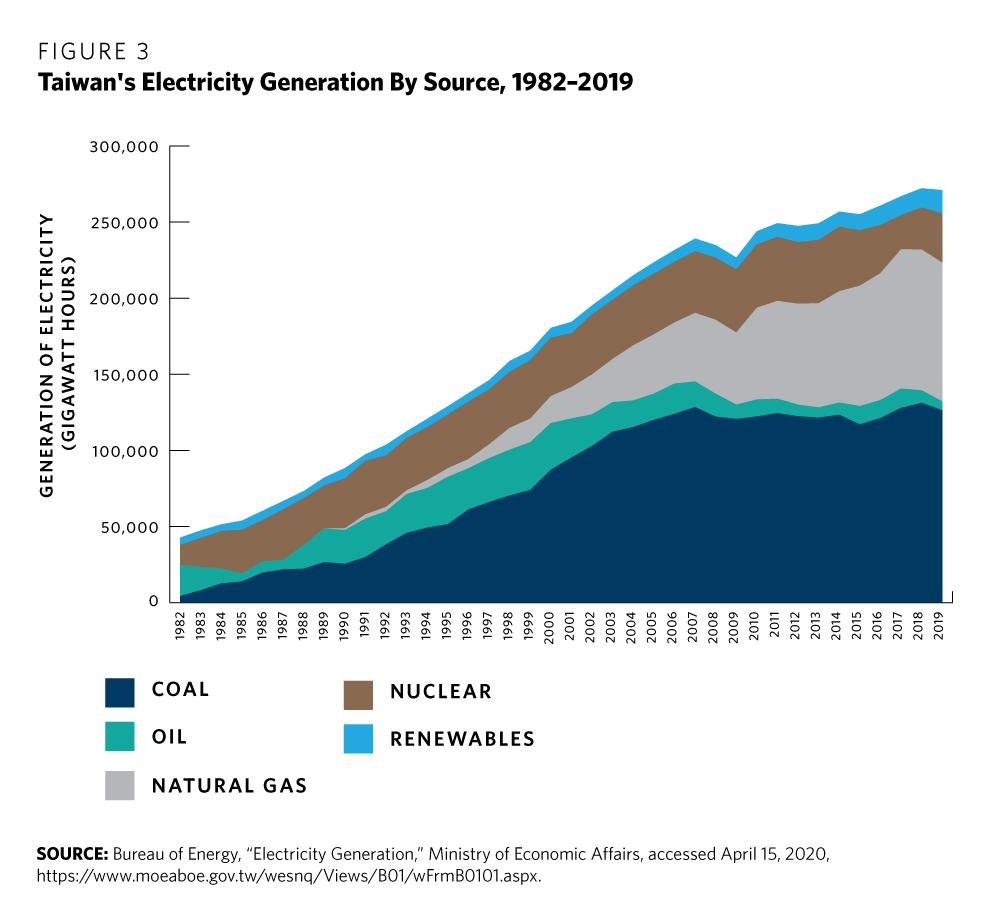
If Taiwan’s grid goes down, Taiwanese officials will quickly report that the attack originated from the mainland. Depending on the severity of the attack, anti-China sentiment may spike. It’s at this point that Taipei, with US prodding, could initiate a call for independence.
If it does, China will not wait idly by as its territorial integrity comes under attack, and will very likely begin the process of forced reunification. Depending on what form this takes, the US should then have the pretense it needs to trigger its obligations under the TRA. 
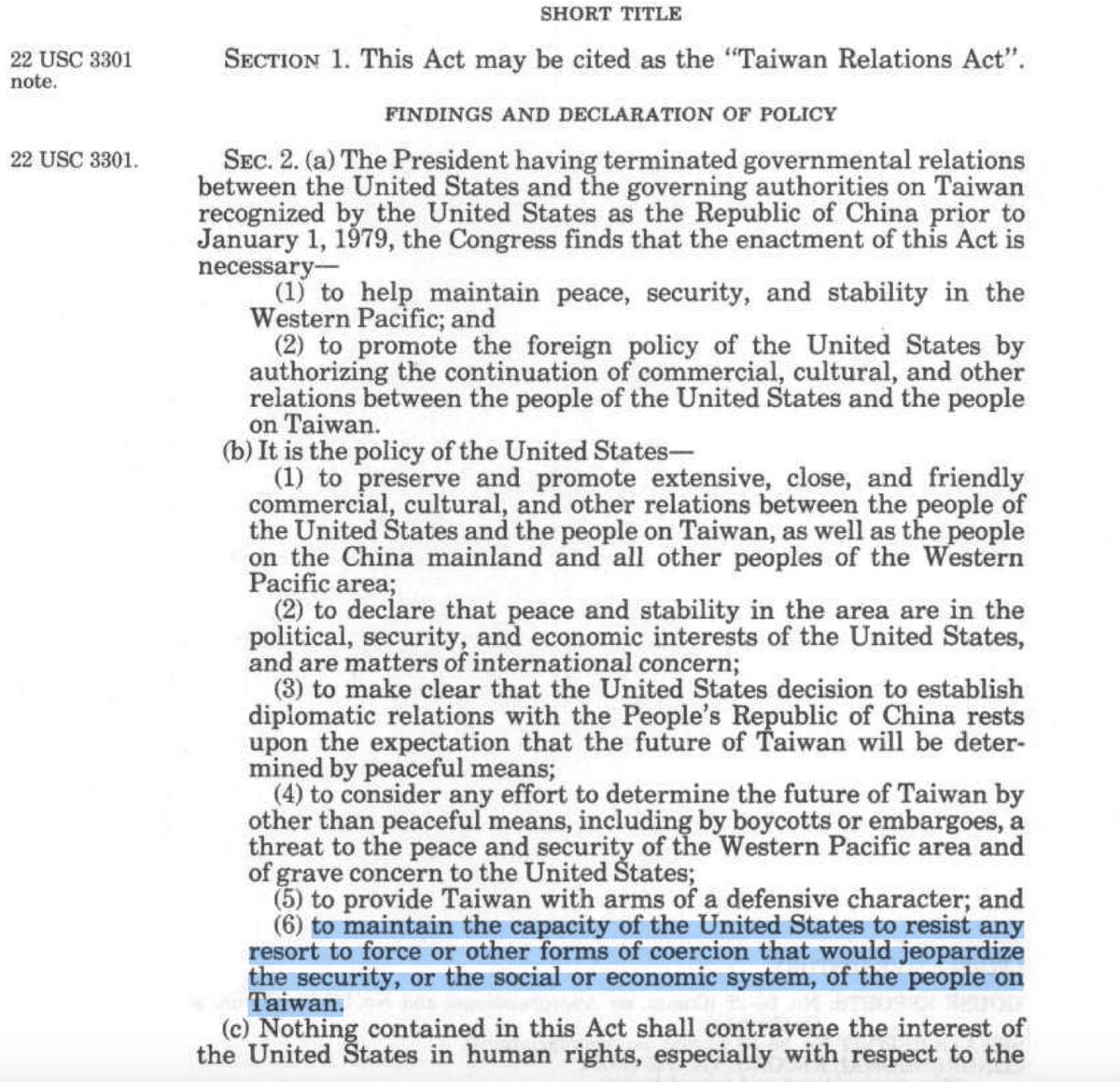
In preparation for this, both parties are jostling for the most virulently anti-China position. In much the same way that Russiagate laid the groundwork for the US proxy war in Ukraine, the recent spate of yellow peril fear-mongering has paved the way for an attack on China. 





But is the US really setting the stage for direct confrontation when even the US’s most optimistic military simulations show that engaging in a conventional head-to-head war against China would most likely end in a draw? 

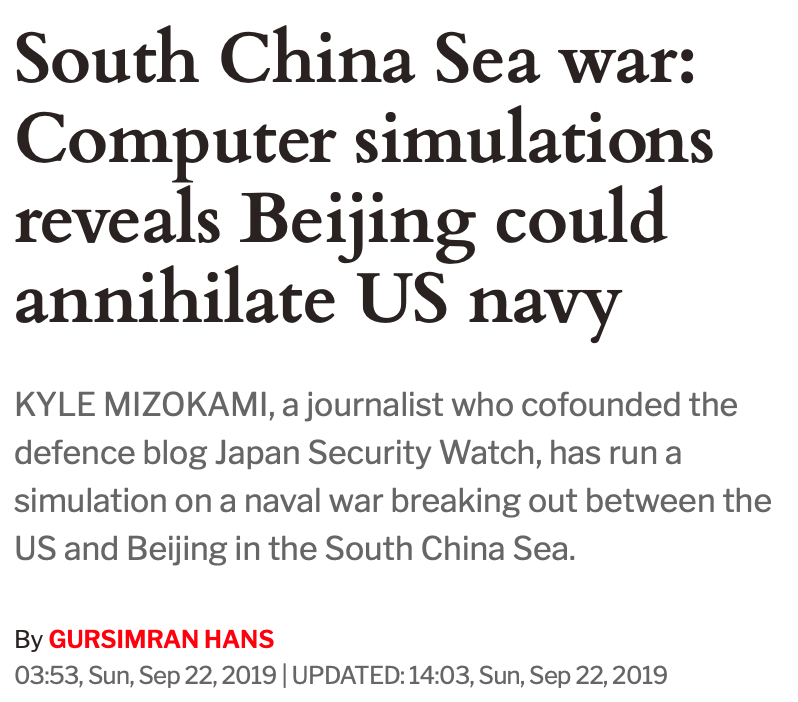

Possibly, but probably not.
Since the Vietnam war, US leaders have known that reinstating the draft is a political third rail. Instead, the post-Vietnam model has been to push proxy states forward into confrontation while continuing to supply weapons from the back.
Since the Vietnam war, US leaders have known that reinstating the draft is a political third rail. Instead, the post-Vietnam model has been to push proxy states forward into confrontation while continuing to supply weapons from the back.
These plans have manifested in the recent US attempts to establish an Asia-Pacific NATO analog via anti-China arrangements like AUKUS or the “QUAD Plus”, which appear to be little more than transparent arrangements to funnel foreign taxpayer money to US weapons manufacturers. 




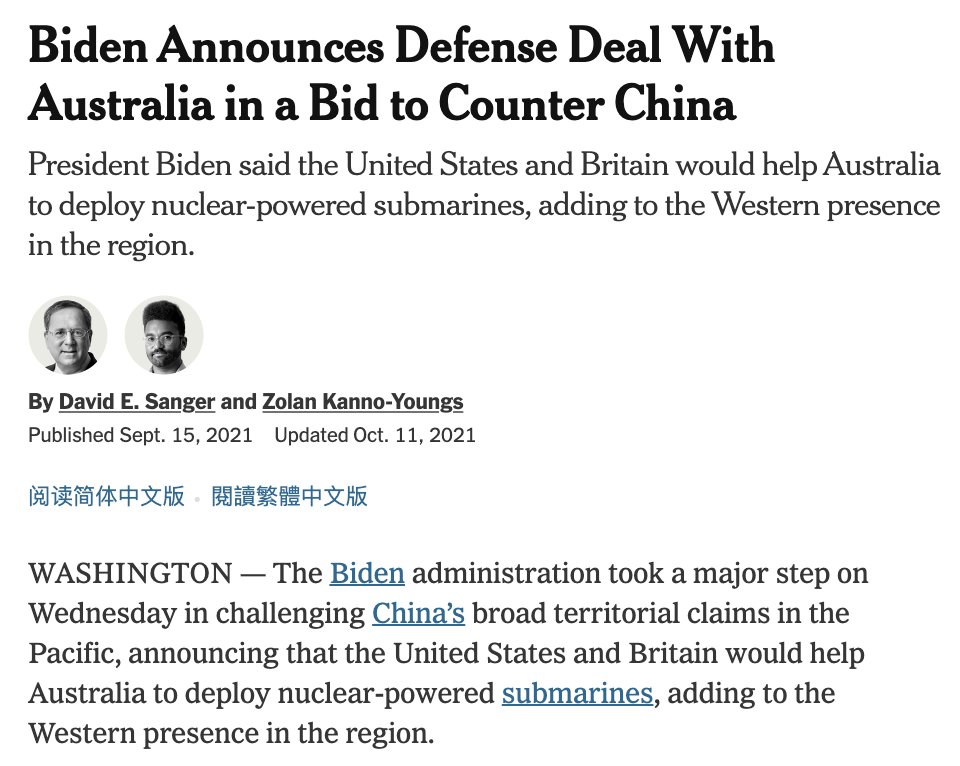
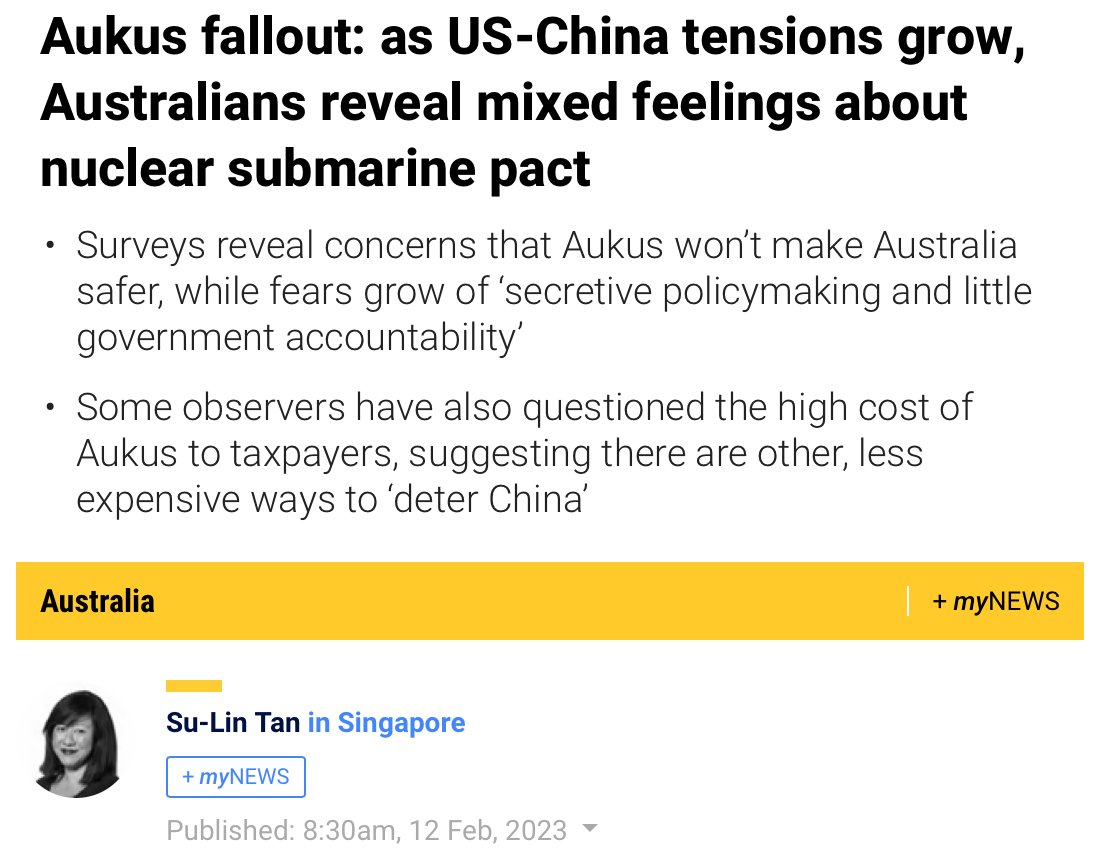

Amongst all US client states in the region, Japan appears the most eager to act as a US forward operating base. While Article 9 of Japan’s constitution both renounces the right to threaten or wage war, Japan is now building an offensive arsenal at a pace not seen since WW2. 



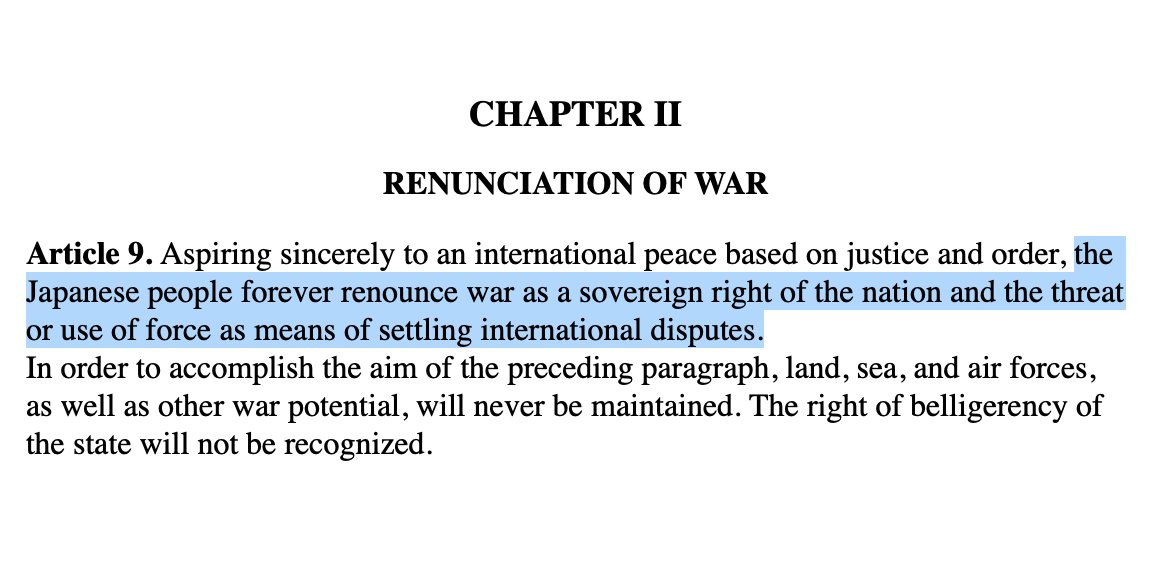
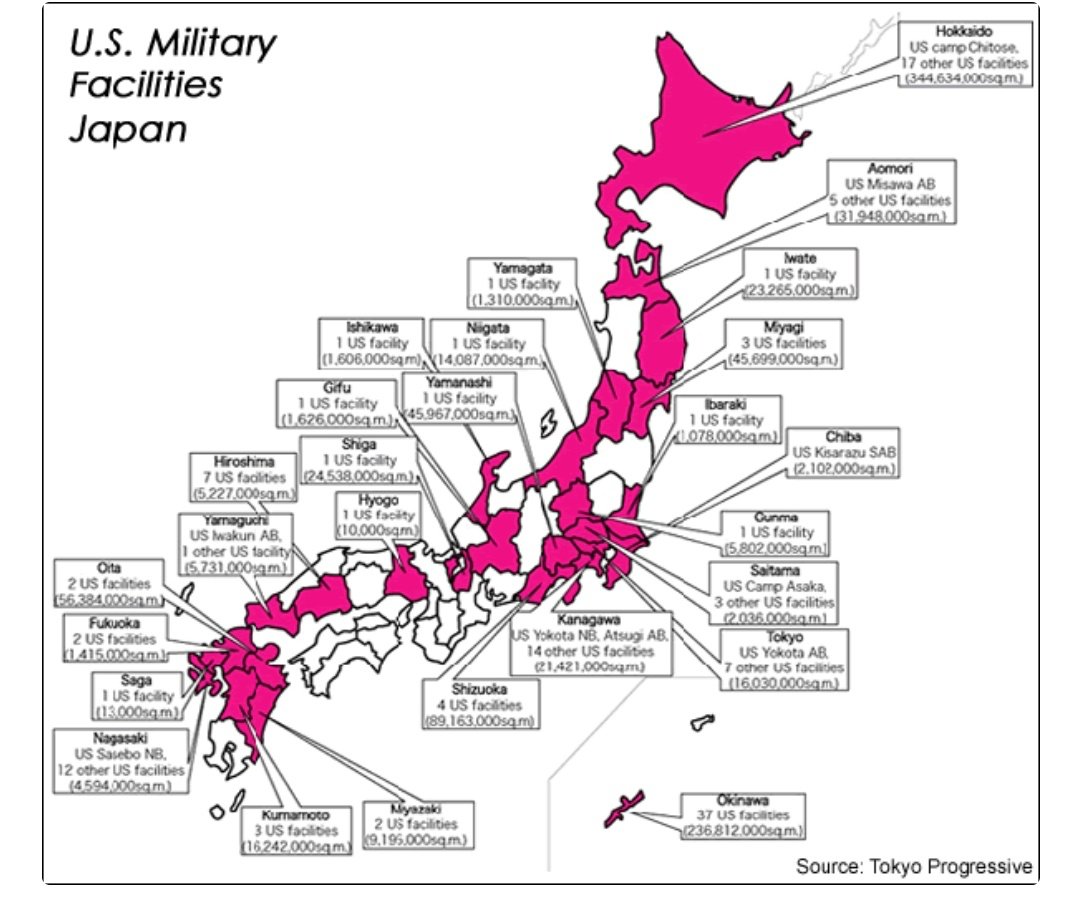
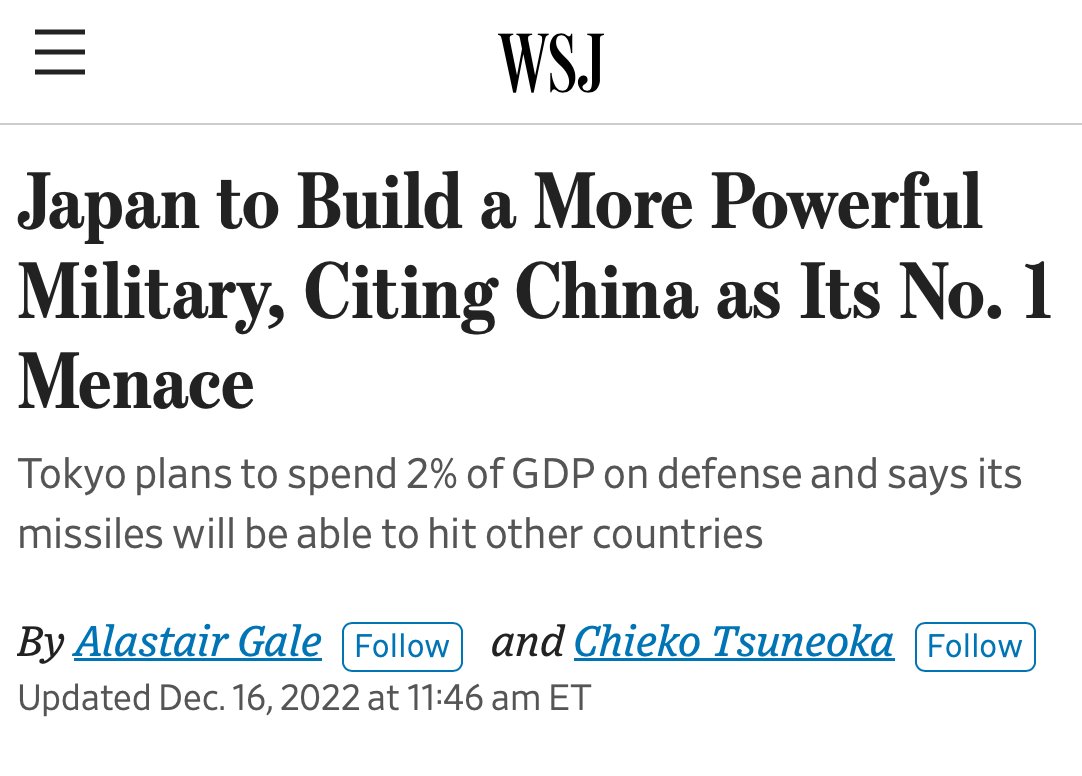
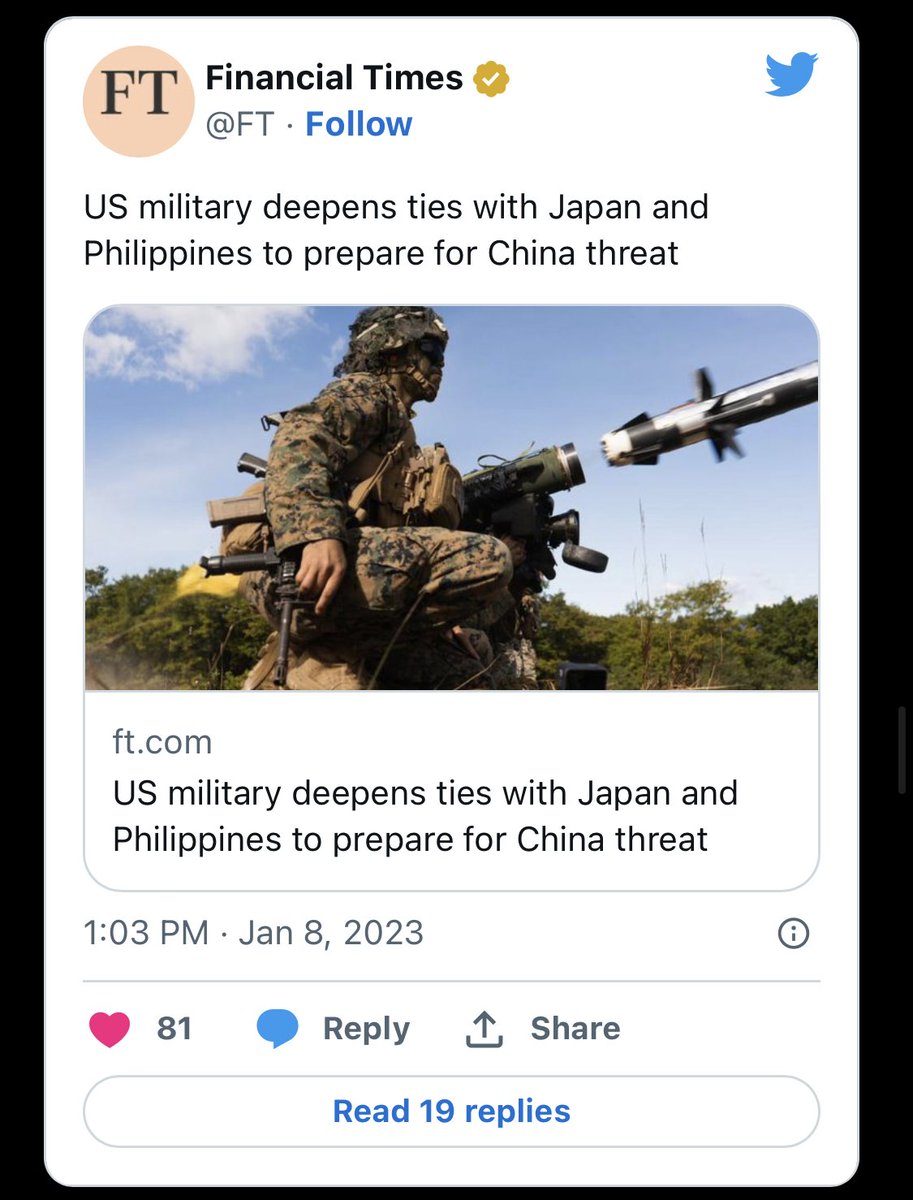
Additional efforts are underway to bring Thailand, India, and the Philippines on board with the attack. Since the election of Marcos Jr in May of last year, the Philippines has been eagerly offering up prime real estate to the US military to build bases throughout the SCS. 


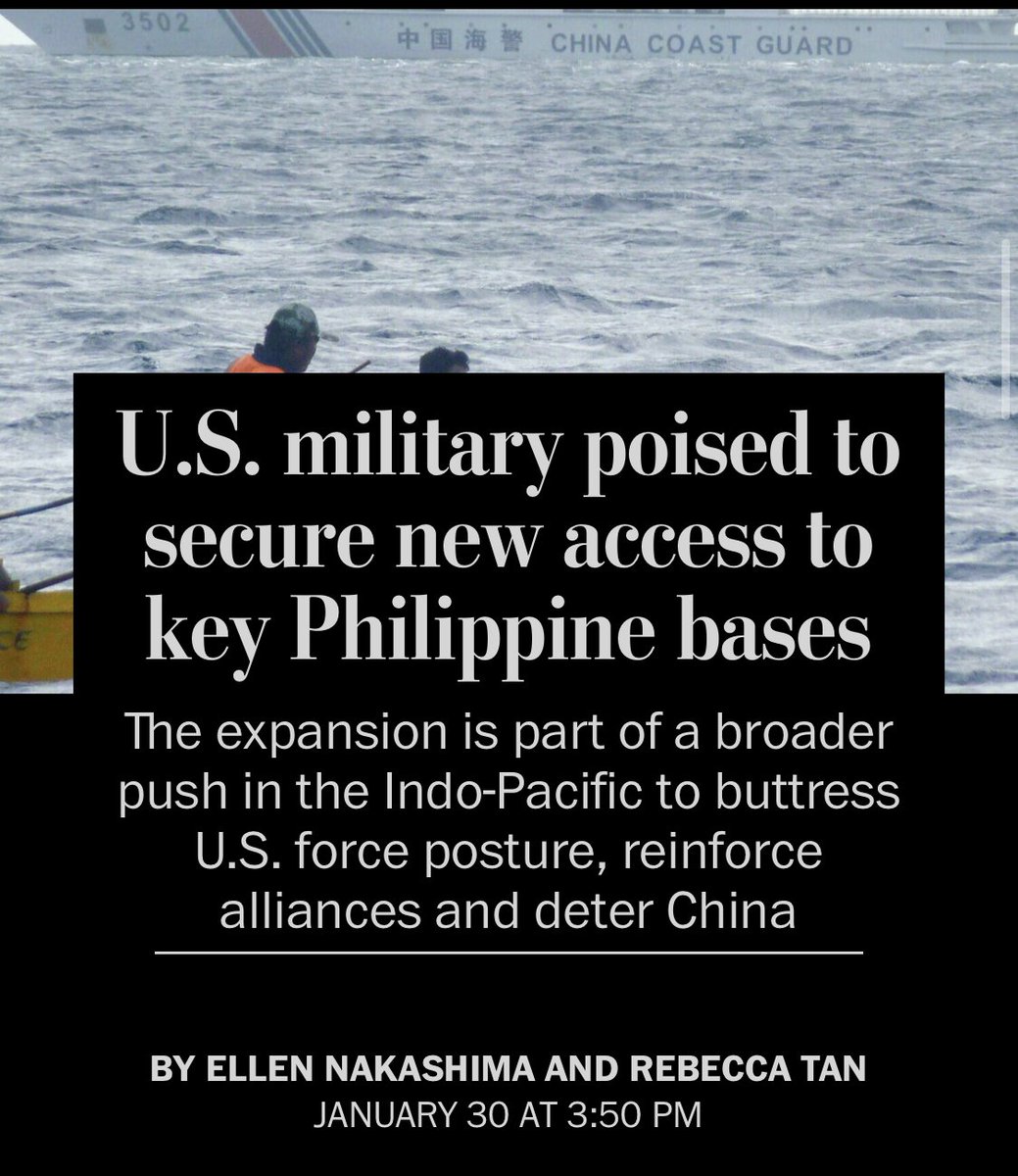
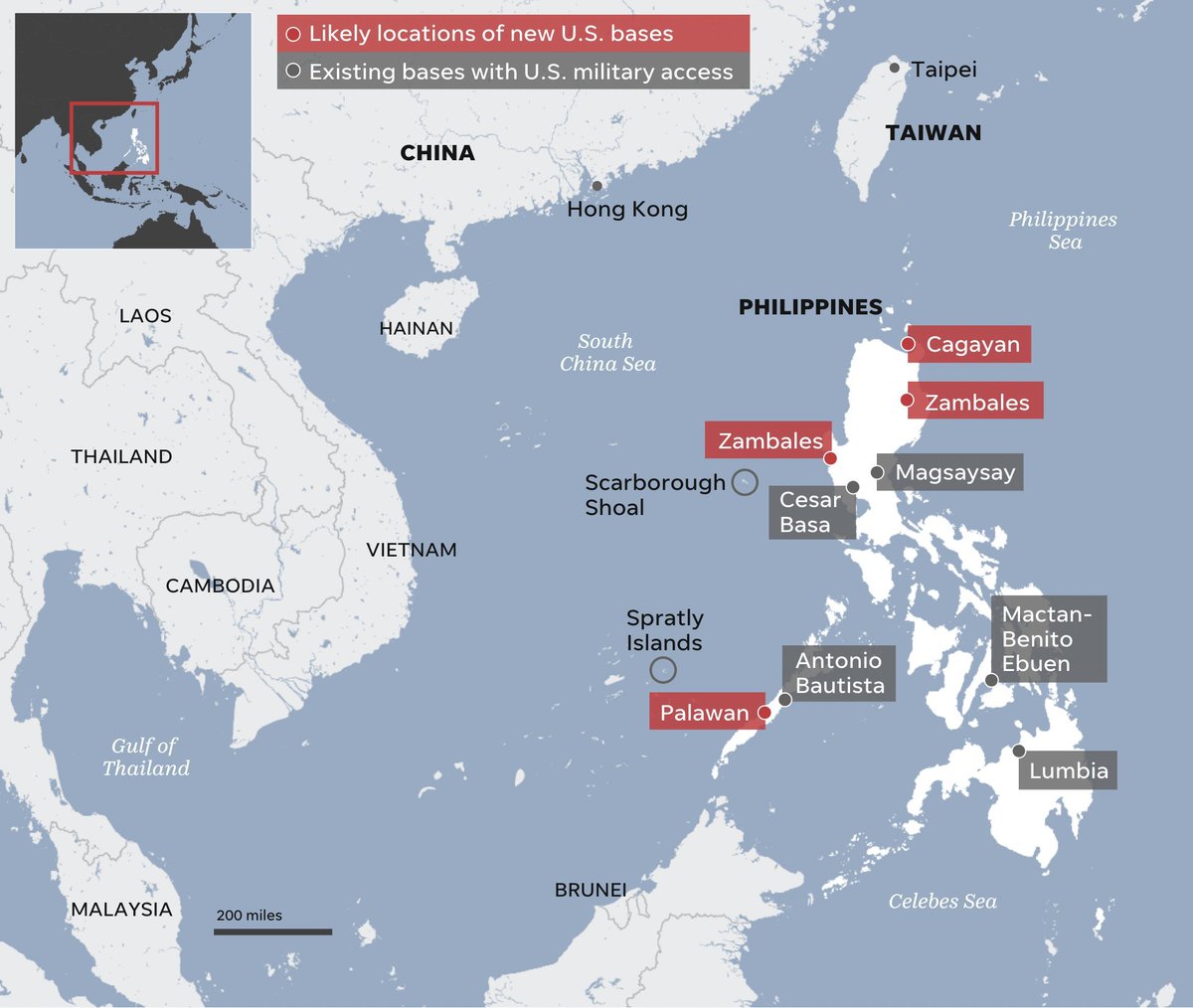

Speculation around the exact means by which the US plans to pull China into war aside, we have likely already crossed the Rubicon beyond which a major military offensive by the US and its vassals is inevitable. The question is: will it work? 
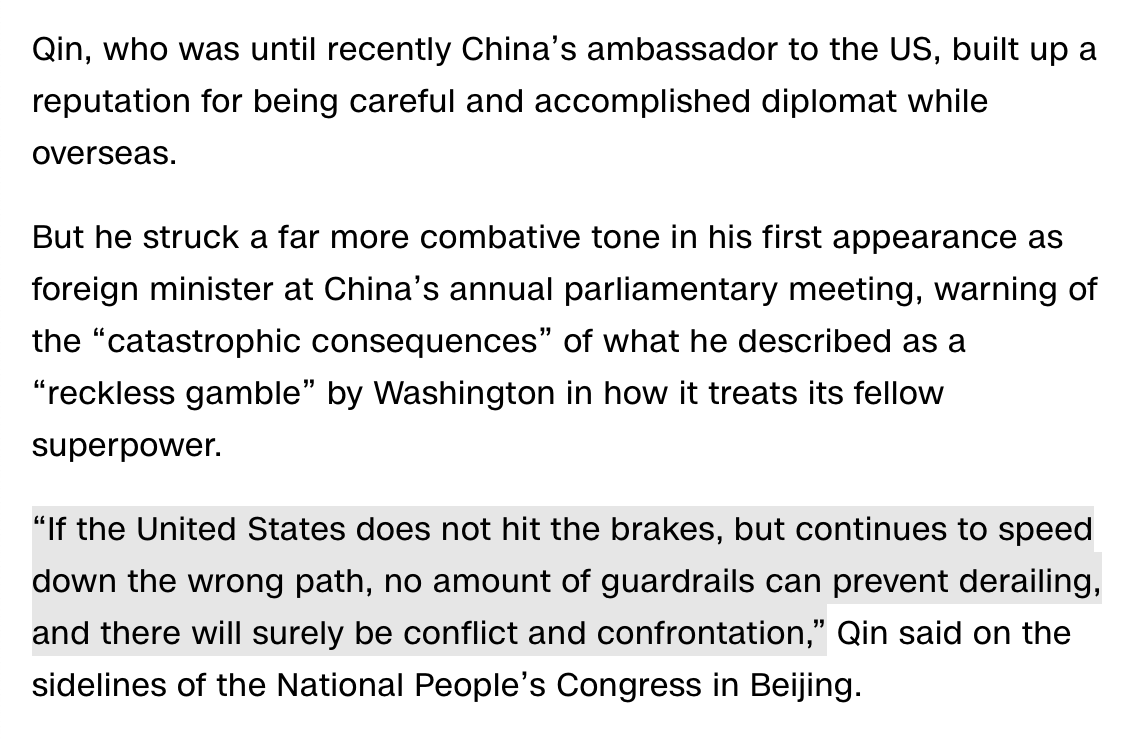
• • •
Missing some Tweet in this thread? You can try to
force a refresh
























